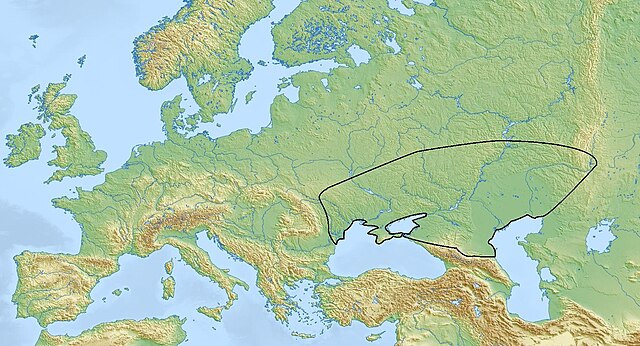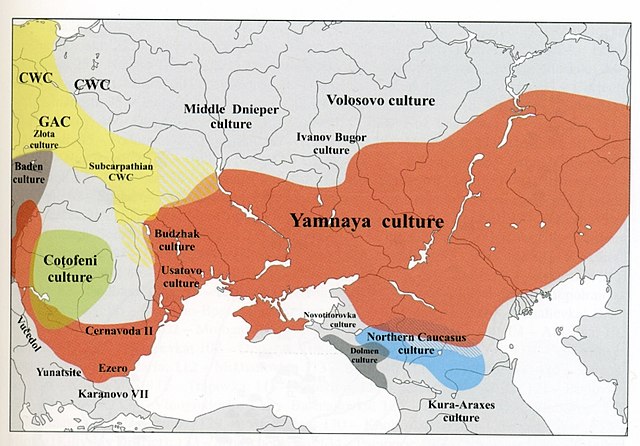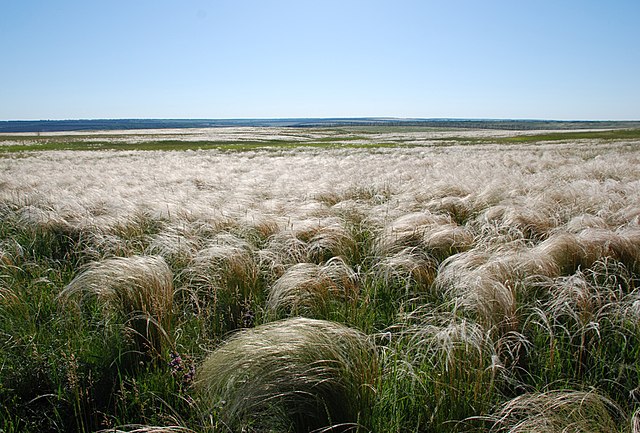The Yamnaya culture or the Yamna culture, also known as the Pit Grave culture or Ochre Grave culture, is a late Copper Age to early Bronze Age archaeological culture of the region between the Southern Bug, Dniester, and Ural rivers, dating to 3300–2600 BCE. It was discovered by Vasily Gorodtsov following his archaeological excavations near the Donets River in 1901–1903. Its name derives from its characteristic burial tradition: Я́мная is a Russian adjective that means 'related to pits ', as these people used to bury their dead in tumuli (kurgans) containing simple pit chambers.
Yamnaya culture
Largest expansion of the Yamna(ya) culture. Modified from c. 3500 origins of Usatovo culture; 3300 origins of Yamna; c. 3300–3200 expansion of Yamna across the Pontic-Caspian steppe; c. 2700 end of Trypillia culture, and transformation of Yamna into Corded Ware in the contact zone east of the Carpathian mountains; 3100–2600 Yamnaya expansion into the Danube Valley.
Yamnaya culture grave, Volgograd Oblast
Sredny Stog culture (c.4500-3500 BCE)
The Pontic–Caspian Steppe is a steppe extending across Eastern Europe to Central Asia, formed by the Caspian and Pontic steppes. It stretches from the northern shores of the Black Sea to the northern area around the Caspian Sea, where it ends at the Ural-Caspian narrowing, which joins it with the Kazakh Steppe in Central Asia, making it a part of the larger Eurasian Steppe. Geopolitically, the Pontic-Caspian Steppe extends from northeastern Bulgaria and southeastern Romania through Moldova and eastern Ukraine, through the North Caucasus of southern Russia, and into the Lower Volga region where it straddles the border of southern Russia and western Kazakhstan. Biogeographically, it is a part of the Palearctic realm, and of the temperate grasslands, savannas, and shrublands biome.
The steppe in Azov-Syvash National Nature Park, Ukraine, with reintroduced horses.
Streltsovskaya Steppe, a preserved area in Milove Raion in Luhansk Oblast, Ukraine. The steppe is often dominated by plumes of Stipa in early summer.
Tulipa suaveolens, one of the most typical spring flowers of the Pontic-Caspian steppe
Bronze Age spread of Yamnaya steppe pastoralist ancestry into two subcontinents—Europe and South Asia—from c. 3000 to 1500 BC.








